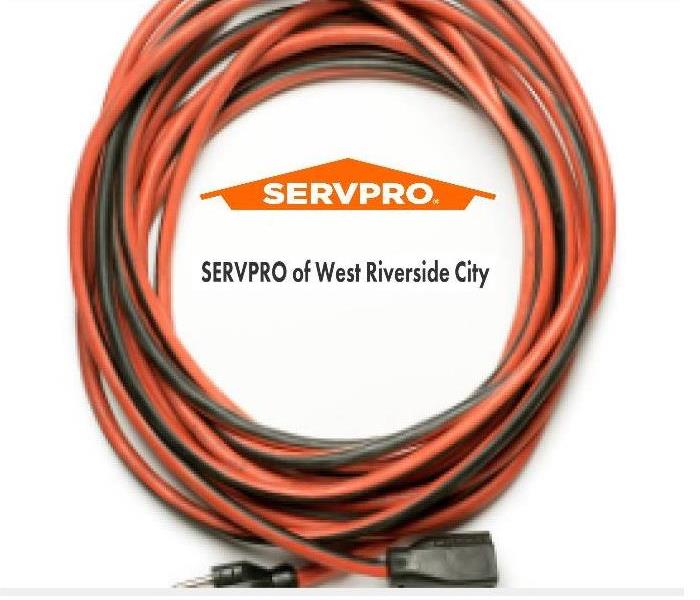Extension Cords Can Be the Most Dangerous Piece of Equipment
4/13/2022 (Permalink)
One of the most common pieces of equipment used in mitigation work, besides air-movers and dehumidifiers, is an extension cord.
They are the easiest way to provide electrical power to a piece of equipment with a cord too short to reach an outlet. But, did you know the extension cord is one of the most abused and misused pieces of equipment on a job?
Have you looked over some water mitigation teams and noticed extension cords that were plugged into an outlet? Were these cords rolled up, laying on the floor? What if it was a 100 feet of cord? My first thought is—my, that is a trip hazard. Why was such a long extension cord being used for such a short distance?
When a long extension cord is used, this will cause a drop in voltage to the piece of equipment being powered. It will also overload the extension cord. And too, I am sure we have all seen the extension cord that is curled up like an old phone cord. If so, this is a cord that has been overloaded and should be replaced.
By OSHA standards, the maximum length of an extension cord is 100 feet. There are three basic types of extension cords—light-duty, medium-duty and heavy-duty.
AWG stands for American Wire Gauge. This is the US standard measure for the diameter of electrical conductors. The higher the AWG number is, the smaller the wire diameter is.
What are some common mistakes made when using extension cords?
Plugging one into the other –The maximum length of an extension cord is 100 ft. by OSHA standards. This doesn’t mean to plug two 50 ft. cords together to reach the distances needed. Use the correct length and AWG needed for the job. Daisy-chaining extension cords could lead to overheating and cause a fire.
Trip Hazards – People can trip over extension cords if not properly placed around the walls. They should be placed out of high foot traffic areas. Never attach extension cords with staples or nails.
Not checking the power rating – If you are dealing with extension cords, you should know the amperage rating of your equipment. Each piece of equipment requires a certain amount of power. The manufacturer describes this along with the amperage rating. Each extension cord can only handle a particular amount of power. Make sure you always match the equipment cord to the same AWG of the extension cord or larger.
Not inspecting – Due to high use and high abuse, extension cords should be visually inspected for damage prior to each use. Look for external defects such as deformed or missing pins, missing grounding pins, loose plug or receptacle ends, broken plug head, uses of duct or electrical tape, damage to outer jacket or insulation, and pinched or crushed outer jacket.
Repairing cords – Any damaged extension cords should be replaced and never repaired. If damaged, remove from service and destroy.
Remember—before setting up your next job, be mindful of the size and how much equipment you are plugging into the extension cord you are using. It’s worth taking the time to properly inspect.






 24/7 Emergency Service
24/7 Emergency Service
